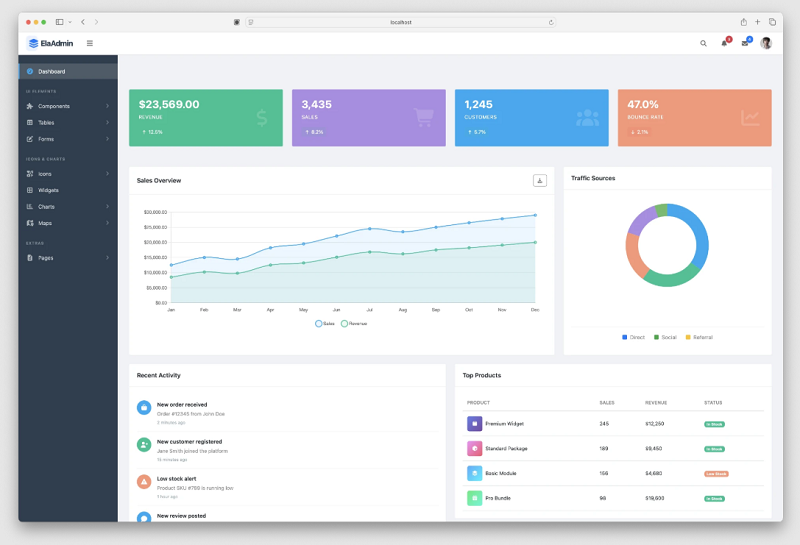Did you know that companies with well-defined sales funnels increase their revenue by 28%?
Sales funnels are a crucial part of any successful business. They guide potential customers through the various stages of the buying process.
However, creating an effective sales funnel can be a daunting task. This is especially true for those who are new to marketing and sales.
In this guide, we will take you through each step of creating an automated sales funnel. Read on to help you convert leads into loyal customers and drive your business to success.
Identify Your Target Audience
The first step to creating a successful sales funnel is knowing who your target audience is. This includes understanding their demographics, interests, pain points, and buying behavior. This will help you tailor your messaging and offers.
Here are a few ways to identify your target audience:
Conduct Market Research
Use market research to gather information about your target audience. You can do this using surveys, focus groups, and other forms of research. This will give you valuable insights into their needs and preferences.
Analyze Your Existing Customers
Your current customers can provide valuable information about your target audience. Use data and analytics to understand who they are and what they like. You should also know why they chose your product or service.
Study Your Competitors
Take a look at what your competitors are doing. This will give you a better understanding of the market landscape. This will also help you identify gaps in the market that you can capitalize on.
Create Engaging Content
Once you have identified your target audience, you need to create content that will capture their attention. This includes blog posts, social media posts, videos, webinars, and more.
Your content should be informative, relevant, and engaging. It should also align with the needs and interests of your target audience. This will help build trust and establish your brand as an authority in your industry.
You can also repurpose your content to reach a wider audience. For example, you can turn a blog post into a video or create an infographic from your social media posts.
Capture Leads with Lead Magnets
A lead magnet is an incentive that you offer in exchange for someone’s contact information. This could be a free e-book, webinar, or discount code. The goal is to entice potential customers to provide their information and enter the sales funnel.
Make sure your lead magnet is relevant and valuable to your target audience. It should address their pain points and offer a solution. You can promote it through your website, social media, and email marketing.
You might also want to consider using a one-page checkout. This makes it easier for customers to provide their information and complete a purchase in one step.
Nurture Leads with Email Marketing
Email marketing is a powerful tool for nurturing leads and converting them into customers. Use email campaigns to send targeted messages based on the actions and interests of your leads.
Segment your email list according to their behavior, demographics, and interests. This will help you personalize your messaging and increase engagement.
You can also use automated email sequences to nurture leads at different stages of the sales funnel. For example, you can send welcome emails to new subscribers. You can also follow-up emails to those who have abandoned their shopping carts.
Convert Leads into Customers with Sales Pages
A sales page is a dedicated landing page designed to convert leads into customers. This could be a product page, pricing page, or checkout page.
Make sure your sales pages are visually appealing and easy to navigate. They should also clearly communicate the value of your product or service and include strong calls to action.
You can also use A/B testing to optimize your sales pages for better customer conversion. This involves creating two versions of a page and testing which one performs better.
Automate Your Sales Funnel
The final step is to automate your sales funnel using marketing automation software. This will streamline the process and save you time so you can focus on other aspects of your business.
Marketing automation software can help you track leads. It can segment your audience and send targeted messages. It can also integrate with other tools such as CRM software to manage customer relationships.
With an automated sales funnel, you can minimize manual tasks. This will ensure a smooth and consistent customer journey from lead to sale.
Measure and Analyze Your Funnel’s Performance
After setting up your automated sales funnel, it’s crucial to measure and analyze its performance. This will help you understand what’s working and where improvements are needed.
Set Up Analytics Tools
Use analytics tools like Google Analytics, HubSpot, or other marketing platforms to track your funnel’s performance. These tools will provide you with data on user behavior, source of traffic, and conversion paths. This information is critical for optimizing your sales funnel.
Evaluate Each Stage of the Funnel
Analyze the effectiveness of each stage of the funnel, from lead generation to conversion. Identify any drop-off points or bottlenecks where potential customers are exiting the funnel. This will help you pinpoint areas that need attention.
Make Data-Driven Decisions
Leverage the data you collect to make informed decisions. If certain content or channels are performing well, invest more resources into them. If you find areas that are underperforming, consider revising your strategy or testing new approaches.
Maintain and Update Your Funnel
Creating an automated sales funnel is an ongoing process. It’s important to continually maintain and update your funnel to keep up with changing trends and customer behavior.
Regularly monitor your funnel’s performance and make necessary tweaks. This could include updating your content, adjusting your messaging, or testing new lead magnets.
It’s also essential to stay updated on the latest marketing tools and techniques. This will help you optimize your funnel further.
Creating an Effective Automated Sales Funnel
Creating an automated sales funnel is crucial for the success of any business. It guides potential customers through the buying process. It also helps convert leads into loyal customers.
By following these steps, you can create a highly effective sales funnel that drives revenue and grows your business. Remember to continually measure, analyze, and update your funnel to ensure its efficiency and effectiveness.
Are you looking for more articles to help you out? Check out the rest of our blog for more information.





